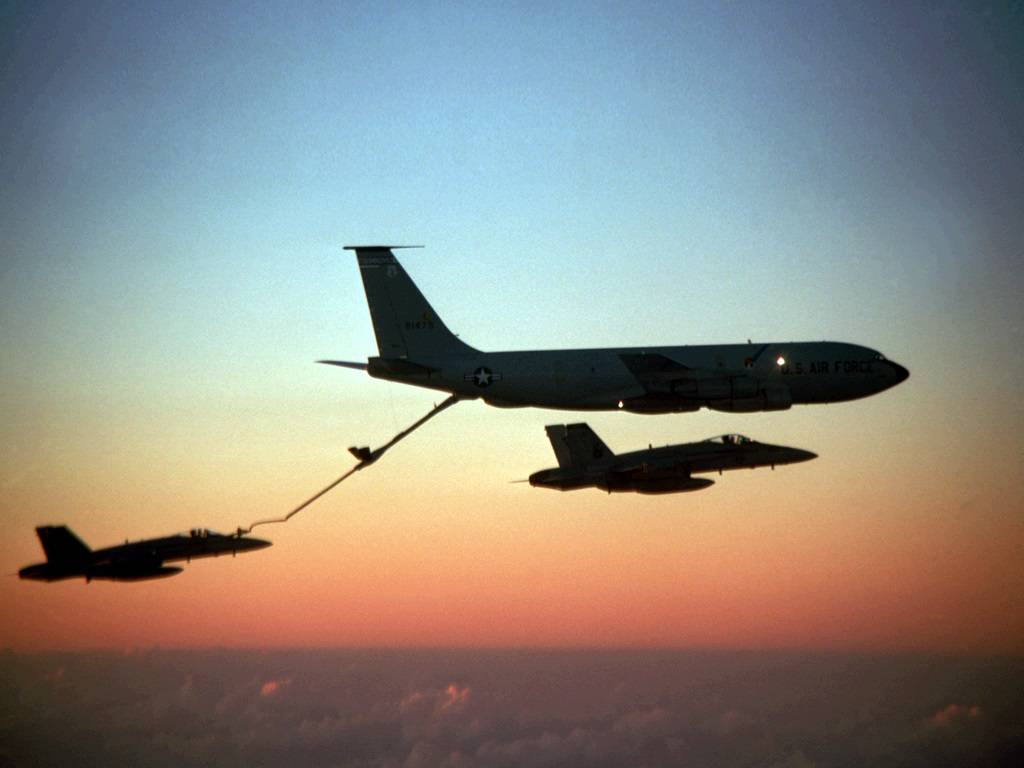The Air Force is going all-in on a new maintenance technique that it hopes will allow it to predict when parts are going to fail on aircraft before they break — and save vast amounts of time and money.
This conditions-based maintenance technique, called CBM+, will allow the Air Force to use predictive analytics to track when parts on airplanes are likely to break, and schedule a convenient time to have a maintainer swap out that part ahead of time. It has already been tested on C-5M cargo planes and KC-135R tankers at 10 bases around the world, and has also been used on the B-1B Lancer bomber.
In effect, the Air Force no longer wants to wait for old and worn-out parts to break, but swap them out befrore they reach that point. When the Air Force flies its planes until they break, they have no choice but to take them out of action and send them into the shop.
But that’s not the most effective way to do it. By waiting until the last minute, maintenance shops might be full up or out of necessary parts, and those planes might have to wait their turn. This takes them off the line for longer than they might otherwise need to if they planned this work out in advance.
That’s where CBM+ comes in. In a Friday conference call with reporters, Brig. Gen. Steven Bleymaier, director of logistics, engineering and force protection for Air Mobility Command, said that the last thing the Air Force wants to do is send a team of maintainers across the world to go fix a vital aircraft that’s been sidelined on a mission. This will be a huge leap forward toward avoiding unscheduled maintenance that might be inconvenient for everybody, he said.
“What this is able to do is allow us to keep our promises to the warfighters that depend on us, and allow us to save time and money over a long period of time,” Bleymaier said. “We’re always looking for ways to reduce churn for our maintainers out there, and also our operations.”
Private aviation companies such as Delta Airlines have been using such a program for years and achieved tremendous savings, Bleymaier said.
And CBM+ is going to only grow from here. Parts of the program are slated to go into effect for all variants of the C-130H and J aircraft this summer, and then the C-17 will follow.
“The results are exciting,” Bleymaier said of the first tests. “They really show us we’re going to see results and savings in the future.”
Maj. Todd Downs, the Air Force’s lead for CBM+ integration, said the program has two elements: Predictive Algorithm Development, or PAD, which collects data from sensors and diagnostic systems already installed in aircraft, and runs it through algorithms to figure out how much certain components or systems have likely degraded.
Once a part hits a certain degradation limit, Downs said, it trips an alert. That lets maintainers in the field know they need to replace that part before it breaks entirely, which would take the plane off the line — or could even put its crew in danger, if it breaks in-flight.
The second element is called Enhanced Reliability Centered Maintenance, or ERCM. This uses literally decades of maintenance and supply data collected by the Air Force on its aircraft to find out how long each part is likely to last. That data is used to set a schedule to forecast — up to two years in advance — when a part is likely to break and get maintenance arranged in advance.
“We’re able to provide that forecast to the field, so we can do maintenance at a time and place of our choosing, instead of being reactive to different events,” Downs said.
The ERCM forecasts account for about 80 percent of the predictive maintenance program, Downs said, and the PAD alerts are the remaining 20 percent.
Downs said that the Predictive Algorithm Development program began being tested last October on C-5s at Travis Air Force Base in California, Dover Air Force Base in Delaware, Joint Base San Antonio-Lackland in Texas, and Westover Air Reserve Base in Massachusetts.
The Air Force learned from those tests that while the PAD program was interesting and helpful, the Air Force was hampered by supply issues. As a result, Downs said, the service settled on an 80-20 balance, relying more on the ERCM forecasts.
From there, the Air Force began testing the ERCM forecasts on the KC-135 this April. Those tests began at MacDill Air Force Base in Florida, and March Air Reserve Base in California. It then spread to RAF Mildenhall in England and Scott Air Force Base in May, and then to Kadena Air Base in Japan and Joint Base Pearl Harbor-Hickam in Hawaii. More units at bases such as Tinker Air Force Base in Oklahoma are following, and soon every KC-135 will be using this program to build forecasts and remove certain parts before they fail.
The Air Force will next turn its eye on the C-130 and all its variants, including the LC-130, and will have all versions of the Hercules using CBM+ by next February. Dyess Air Force Base in Texas, Peoria Air National Guard Base in Illinois, Stratton Air National Guard Base in New York, and Rosecrans Air National Guard Base in Missouri will be among the first C-130 bases, and more will follow.
But, Bleymaier said, Delta warned the Air Force that one of the hardest parts of this change will be teaching maintainers that they have to start replacing parts that aren’t broken yet.
“This is a major culture change,” Bleymaier said.
Stephen Losey is the air warfare reporter for Defense News. He previously covered leadership and personnel issues at Air Force Times, and the Pentagon, special operations and air warfare at Military.com. He has traveled to the Middle East to cover U.S. Air Force operations.








